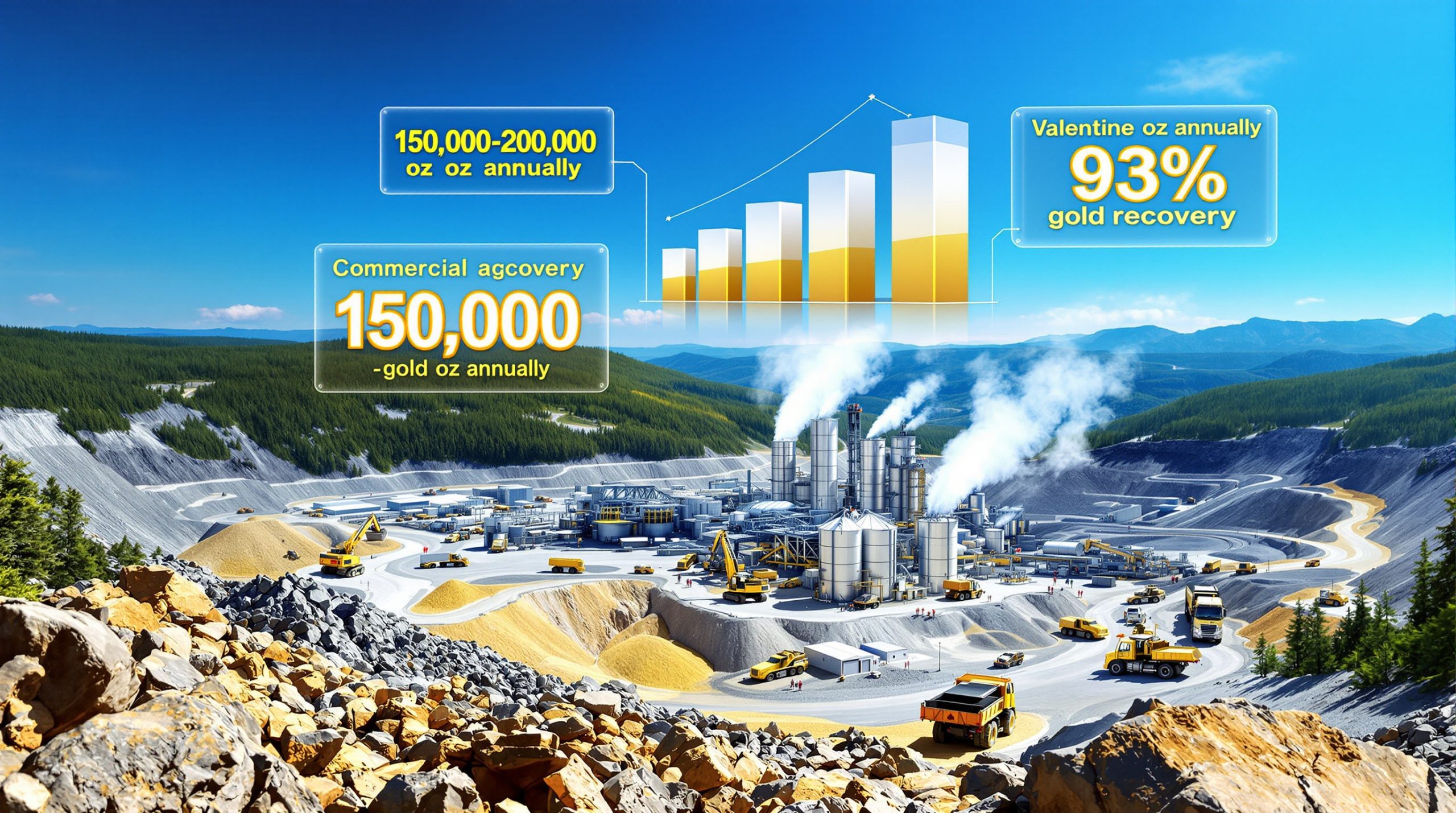African Rainbow Minerals' strategic evaluation of Papua New Guinea represents a pivotal moment in global copper development, as the African Rainbow Papua New Guinea copper venture gains momentum amid accelerating decarbonisation worldwide. Traditional mining powerhouses now evaluate unconventional partnerships across emerging markets, particularly where untapped mineral wealth intersects with established infrastructure networks. This shift represents more than simple expansion—it signals fundamental changes in how mining companies approach risk distribution, capital deployment, and long-term resource security.
Papua New Guinea emerges as a focal point for these strategic considerations, offering unique advantages that extend beyond basic resource availability. The nation's position within established Pacific mining corridors, combined with evolving regulatory frameworks and proximity to major Asian consumption centres, creates compelling investment scenarios for companies seeking copper investments outside traditional South American and African operations.
Geographic Advantages and Resource Quality Assessment
Papua New Guinea's geological foundation within the Pacific Ring of Fire creates exceptional opportunities for copper mineralisation. The country's location provides natural advantages through established shipping routes to major Asian markets, reducing transportation costs compared to competing copper regions. Morobe Province specifically offers existing mining infrastructure that can support expanded operations without requiring complete greenfield development.
The government's Foreign Investment Policy includes specific provisions encouraging international mining partnerships through streamlined approval processes and competitive fiscal terms. These PNG mining opportunities target partnerships between international operators and domestic stakeholders, creating framework conditions that support large-scale copper development projects.
Resource Quality Metrics:
- Copper grades frequently exceed 0.8% across identified deposits
- Multi-metal deposits often include recoverable gold and silver concentrations
- Reserve estimates suggest production potential extending 25-30 years
- Processing infrastructure requirements align with proven flotation technologies
Financial Architecture for Multi-Billion Dollar Ventures
The African Rainbow Papua New Guinea copper venture represents capital commitments requiring sophisticated financial structuring. Industry analysis suggests total project investments ranging from USD 4-5 billion, necessitating phased development approaches that distribute risk across multiple timeframes and operational stages.
Development Phase Capital Requirements
Exploration and Feasibility (Years 1-3):
- Initial geological surveys: USD 150-250 million
- Environmental baseline studies: USD 75-125 million
- Community engagement and permitting: USD 50-100 million
- Infrastructure assessment and planning: USD 100-150 million
Construction and Development (Years 4-7):
- Mine development and pit preparation: USD 1.5-2.0 billion
- Processing facility construction: USD 800 million-1.2 billion
- Infrastructure development (roads, power, ports): USD 600-900 million
- Working capital and contingency reserves: USD 400-600 million
Operational Optimisation (Years 8-25):
- Annual sustaining capital: USD 150-200 million
- Technology upgrades and expansion: USD 75-125 million annually
- Environmental compliance and monitoring: USD 25-50 million annually
Furthermore, African Rainbow Minerals' financial positioning supports this capital-intensive approach. The company maintains ZAR 13 billion (approximately USD 756 million) in cash reserves plus ZAR 7 billion in available credit facilities, providing foundation liquidity for initial development phases.
Comparative Analysis Against Global Copper Operations
Papua New Guinea copper projects demonstrate competitive advantages when benchmarked against established operations worldwide. Transportation costs to Asian markets remain 15-25% lower than equivalent shipments from Chilean or Peruvian operations, while labour costs and regulatory complexity generally favour PNG development compared to North American alternatives.
Production Economics Comparison:
| Cost Component | PNG Operations | South American Average | North American Average |
|---|---|---|---|
| All-in sustaining costs | $2.75-3.25/lb | $3.00-3.75/lb | $3.50-4.25/lb |
| Transportation to Asia | $0.08-0.12/lb | $0.15-0.22/lb | $0.18-0.28/lb |
| Labour costs (annual) | $45,000-65,000 | $55,000-75,000 | $75,000-95,000 |
| Regulatory timeline | 18-24 months | 24-36 months | 36-48 months |
Processing efficiency rates in PNG operations typically achieve 88-92% copper recovery through conventional flotation methods, comparing favourably with global benchmarks while offering opportunities for by-product revenue through gold and silver recovery circuits.
Investment Return Projections
Base case financial modelling suggests internal rates of return between 16-22% across various copper price scenarios. Net present value calculations at 8% discount rates indicate project values ranging from USD 2.8-4.2 billion, supporting the substantial capital commitments required for development.
Payback periods extend 9-13 years depending on copper price assumptions and production ramp-up schedules, aligning with industry standards for large-scale copper development projects while providing sufficient cash generation potential to support debt service requirements.
Geopolitical Implications and Strategic Positioning
The African Rainbow Papua New Guinea copper venture operates within complex geopolitical dynamics affecting global supply chain dynamics. China's Belt and Road Initiative includes significant PNG infrastructure investments, creating both opportunities and competitive pressures for Western mining partnerships in the region.
Australia's strategic partnership with Papua New Guinea through the Australia-PNG Economic Corridor provides additional context for international mining investments. This framework includes provisions for skilled workforce mobility, regulatory cooperation, and environmental standards alignment that can benefit mining operations seeking integration with Australian supply chains and technical expertise.
Regional Strategic Considerations
- Supply Chain Diversification: PNG copper production reduces dependence on South American supply routes potentially affected by political instability or infrastructure constraints
- Technology Transfer Opportunities: Partnerships with established operators facilitate adoption of advanced mining technologies and environmental management practices
- Critical Minerals Strategy: PNG operations align with Western nations' objectives to develop alternative supply sources for strategic materials outside Chinese influence
United States critical minerals policy specifically identifies copper as strategically important, creating potential for government support mechanisms including export financing, insurance coverage, and diplomatic backing for qualifying international mining ventures.
Technology Innovation and Operational Efficiency
Modern copper operations in Papua New Guinea incorporate advanced mining technologies that enhance productivity while addressing environmental and safety requirements. Digital mining solutions enable remote monitoring and predictive maintenance systems that reduce operational costs and improve equipment reliability.
Automation Implementation Strategies
- Autonomous Haulage Systems: Reduce labour requirements by 20-30% while improving safety metrics through elimination of human operators in high-risk environments
- Real-time Ore Grade Monitoring: Enable dynamic processing optimisation that increases copper recovery rates by 3-5% compared to traditional batch processing methods
- Predictive Maintenance Algorithms: Decrease equipment downtime by 15-25% through early identification of mechanical issues and optimised maintenance scheduling
Processing technology advances focus on energy efficiency improvements and by-product recovery optimisation. Hydrometallurgical processing techniques can increase overall metal recovery while reducing environmental impacts compared to traditional smelting approaches.
Environmental Technology Integration
- Water recycling systems achieving 85-90% process water reuse rates
- Tailings management technologies enabling dry stack storage and reduced environmental footprint
- Renewable energy integration for mine power requirements, particularly solar and hydroelectric sources
- Real-time environmental monitoring networks providing continuous compliance verification
Environmental and Social Governance Framework
Papua New Guinea's mining regulatory environment requires comprehensive environmental and social governance compliance that aligns with international best practices. The Mining Act and associated regulations mandate detailed environmental impact assessments, community consultation processes, and ongoing monitoring requirements throughout project lifecycles.
Community Engagement Requirements
- Local employment targets typically require 60-70% of operational workforce from PNG nationals
- Skills development programmes must provide training opportunities for local communities
- Revenue sharing arrangements include landowner equity participation and royalty payments
- Cultural heritage protection protocols require consultation with traditional landowners and archaeological surveys
Environmental Compliance Standards
- Water quality monitoring at monthly intervals across multiple sampling locations
- Air quality assessments including particulate matter and emissions tracking
- Biodiversity impact assessments with offset requirements for habitat disruption
- Rehabilitation bonds securing environmental restoration funding throughout operations
International lenders and equity investors increasingly require ESG standards compliance verification through independent third-party monitoring and reporting. These requirements create additional operational costs but also provide risk mitigation benefits through systematic environmental management and community relations programmes.
Market Scenario Planning and Investment Risk Assessment
Copper market dynamics suggest multiple scenarios affecting Papua New Guinea project economics. Global decarbonisation trends support long-term demand growth, while supply constraints from existing operations create opportunities for new production capacity.
What Are the Key Demand Growth Scenarios?
Accelerated Transition Case (25% probability):
- Electric vehicle adoption reaches 60% of new car sales by 2030
- Grid-scale renewable energy deployment accelerates 40% above current projections
- Copper demand increases 25-30% by 2035
- Price support at USD 5.50-6.25 per pound sustained
Base Case Transition (55% probability):
- EV adoption follows current trajectory reaching 40% by 2030
- Renewable energy deployment continues at projected rates
- Copper demand growth of 18-22% through 2035
- Price range USD 4.75-5.50 per pound with cyclical variations
Delayed Transition (20% probability):
- Policy reversals or technological constraints slow decarbonisation
- EV adoption plateaus at 25-30% by 2030
- Copper demand growth limited to 12-15% through 2035
- Price pressure in USD 3.75-4.50 range requiring cost optimisation
Supply Disruption Analysis
Existing copper operations face multiple challenges including resource depletion, labour disputes, and environmental constraints. Chile's copper production shows declining grades requiring higher processing costs, while Peruvian operations encounter political risk and community opposition. These factors support price premiums for new production capacity from politically stable jurisdictions, according to industry experts.
Investment Evaluation Framework and Due Diligence
Evaluating Papua New Guinea copper opportunities requires comprehensive analysis across technical, financial, political, and operational dimensions. Due diligence processes must address resource quality verification, infrastructure adequacy assessment, regulatory compliance requirements, and community relations evaluation.
Technical Due Diligence Components
- Independent geological resource verification through NI 43-101 or JORC compliant studies
- Metallurgical testing confirmation of processing recovery rates and concentrate quality
- Infrastructure capacity assessment including power supply, transportation, and port facilities
- Environmental baseline studies and permit requirement evaluation
Financial Analysis Framework
- Net present value calculations across multiple copper price scenarios
- Internal rate of return sensitivity analysis incorporating capital cost variations
- Cash flow modelling including debt service coverage and dividend potential
- Capital allocation efficiency comparison with alternative investment opportunities
Risk Mitigation Strategies
- Political risk insurance through multilateral development banks or export credit agencies
- Currency hedging programmes addressing PNG Kina and Australian Dollar exposures
- Commodity price hedging for initial production years ensuring cash flow stability
- Force majeure insurance covering natural disasters and infrastructure disruption
Partnership structures between African Rainbow Minerals and established operators like Newmont Corporation provide additional risk mitigation through combined technical expertise, financial capacity, and operational experience. These arrangements enable risk sharing while leveraging complementary strengths across exploration, development, and production phases, as highlighted in recent market reports.
Consequently, the African Rainbow Papua New Guinea copper venture represents strategic positioning within evolving global mining dynamics, offering exposure to critical mineral demand growth while providing geographic diversification benefits for portfolio optimisation.
Disclaimer: This analysis contains forward-looking statements and projections based on current market conditions and publicly available information. Actual results may vary significantly due to commodity price volatility, regulatory changes, operational challenges, and other factors beyond company control. Potential investors should conduct independent due diligence and consider professional investment advice before making investment decisions.
Is Your Portfolio Positioned for the Next Major Copper Discovery?
Discovery Alert's proprietary Discovery IQ model delivers real-time alerts on significant copper and mineral discoveries across the ASX, transforming complex geological announcements into actionable investment insights. With Papua New Guinea and similar international ventures highlighting the strategic importance of early discovery identification, subscribers gain immediate access to Australian mining opportunities that could benefit from global copper demand trends. Begin your 30-day free trial today to position yourself ahead of the market in this critical commodities sector.




